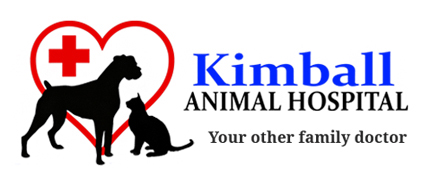Library
-
There are many ways we can change our dog's home environment to help them more easily move around and avoid injuries. This handout reviews some key points to improve your dog's comfort at home and on car trips.
-
Critical care patients in the hospital are at risk of becoming malnourished, and poor food intake can delay healing and recovery. When hospitalized patients don’t get adequate calories and nutrients, their cellular metabolic activities are disrupted. They can develop problems with medications - either with inadequate drug activity, or creating a relative overdose if drug elimination is slowed. Critically ill cats that are not eating well on their own can directly benefit from the nutrition support provided by a feeding tube.
-
Critical care patients in the hospital are at risk of becoming malnourished, and poor food intake can delay healing and recovery. When hospitalized patients don't get adequate calories and nutrients, their cellular metabolic activities are disrupted. They can develop problems with medications - either with inadequate drug activity, or creating a relative overdose if drug elimination is slowed. Critically ill dogs that are not eating well on their own can directly benefit from the nutrition support provided by a feeding tube.
-
Crofelemer CA1, also known as Crofelemer (brand name Canlevia®-CA1), is an antidiarrheal drug used to treat diarrhea caused by chemotherapy in dogs. Crofelemer CA1 comes in delayed release tablet form.
-
In veterinary dentistry, tooth repair or restoration that fully covers the tooth is called a crown. Crowns are used after root canal therapy or when enamel is not present due to wear or congenital disease. This article discusses how crowns are made and used in veterinary care. Under normal wear, and with special care, the crown should last for your dog's lifetime.
-
The word cruciate means 'to cross over' or 'form a cross'. The cruciate ligaments are two bands of fibrous tissue located in each knee joint. They connect the femur and tibia (the bones above and below the knee joint). The knee joint of the cat is one of the weakest in its body. When severe twisting of the knee joint occurs; the anterior or cranial cruciate ligament most commonly tears or breaks.
-
The cruciate ligaments are two bands of fibrous tissue located within each stifle joint. They join the femur and tibia together so that the knee works as a stable, hinged joint. The two most common causes of cranial cruciate rupture are trauma and degeneration of the ligaments within the joint. There are various surgical techniques to stabilize the knee joint following cruciate rupture. Regardless of the technique used to stabilize the joint, arthritis is likely to develop in the joint as your dog ages.
-
This handout discusses the use of cryosurgery in pets. This technique involves the use of extreme cold to destroy abnormal or diseased tissues. A short discussion in included as to how the technique is used, and in what circumstances it may be appropriate to use.
-
Cryptosporidium is a species of single-celled parasite that can infect your dog through the gastrointestinal tract. Clinical signs such as diarrhea and weight loss may only be seen in immunosuppressed patients, including puppies. These patients may need supportive care and other treatment to control disease. Certain Cryptosporidium species can be spread between pets and humans, making this parasite zoonotic.
-
Crystalluria refers to the presence of crystals in the urine. These crystals are made up of minerals and other substances that would normally be dissolved in the urine; crystals form when these substances do not remain dissolved in the urine and instead coalesce (join together) into crystals. Crystalluria is diagnosed via urinalysis.

